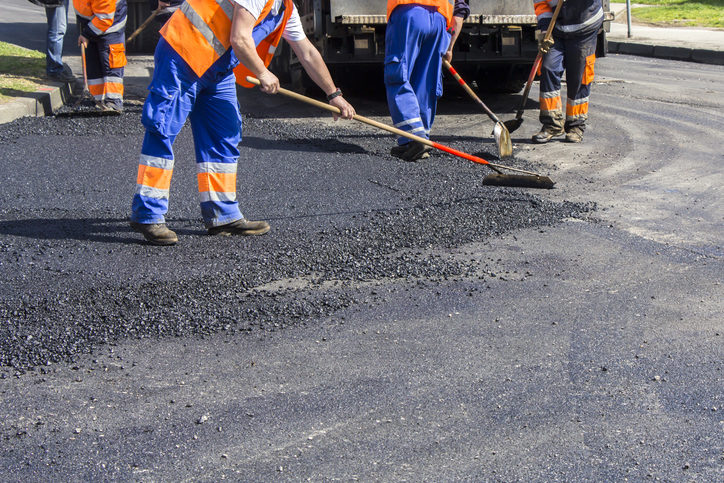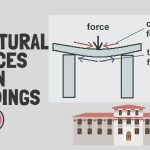Ever hit a pothole at 70mph? To paraphrase Ben Franklin, do a little preventive work now and save a lot of curative work later. Applied to roads and highways, this philosophy is increasingly important in light of changes in infrastructure budgets.
Expecting the Unexpected
Anyone who drives a road vehicle knows how vital a good driving surface is to modern transportation. Traveling at speed on even the best tires and tuned suspension can be excessively nerve racking after an intimate encounter with a pothole. Or worse. Recent statistics indicate 30% of traffic fatalities can be directly linked to poor road surface conditions. But with declining transportation revenues dedicated to road replacement, proper maintenance as prevention before cure is becoming more important than ever.
Life As a Highway Isn’t Easy
A properly constructed road typically consists of several layers. At the bottom lies the sub grade, consisting of native soil if possible. Directly above the sub grade is one or more base course layers which provide the main structural characteristics of the road. Finally the surface that we drive on is the finish or wearing course. While this layer must withstand the stresses of moving vehicles, it must also be able to withstand nature’s onslaught of rain, sun, snow, freeze/thaw cycles, and/or blistering heat at various times during the year. Although travelers experience pavement distress at this surface layer, the most severe failures often occur in the underlying layers.
One of the biggest culprits in many failures is water. Water by itself is fairly harmless to a pavement. Even torrential rain is easily shrugged off by a properly designed and maintained roadway. However, let just a little of that water flow into a crack at the surface to get trapped in the base layers and trouble starts. While most water will eventually safely percolate underneath a paved road the process can take time, especially if saturation occurs. Pressurized water from traffic loads can be a powerful force, powerful enough to degrade a small area of the base course. Once degradation begins, more water collects, which takes more time to drain, which degrades more of the base course, until finally the surface starts to collapse. Now water really starts to collect in the resulting depression. Tires running over the water filled area again pressurizes the water and causes more degradation. And on and on…..
Keeping it Superficial
Until the hole is repaired, or the pavement is replaced down to the subgrade. Better still, why not prevent water from penetrating in the first place? While corrective repairs are expensive, time consuming, and require lengthy traffic disruption, most maintenance procedures are quick and up to ten times less costly than performing major pavement rehabilitation. These procedures can be defined in two broad categories as preventive maintenance and routine maintenance.
Preventive maintenance consists of treatments and procedures which preserve a road surface still in good condition. It slows deterioration and can improve friction and drainage, all without significantly changing the engineered structure. These procedures include crack sealing, chip seals, slurry seals, micro surfacing, and thin overlays:
Crack seals are caulk like materials injected or sprayed into a crack to seal the surface from moisture and help protect exposed crack edges.
Chip seals consist of a spray applied binder (molten or emulsified bitumen) covered with a single layer of small aggregates and lightly compacted. They can improve surface friction and smoothness but are less effective in sealing cracks. The process also requires brooming to remove excess aggregates. Chip seals are typically less than 1/4″ thick.
Slurry seals typically use emulsified asphalt mixed with fine aggregate and sand, which is then spread over the road surface. This also results in an improved surface and also acts as an effective crack sealer due to penetration by the binder and fine aggregates. Slurry seals are typically less than 1/2″ thick.
Micro surfacing is similar to slurry sealing but uses an improved aggregate gradation (the specified sizes of rock and sand) and can be applied as a thicker layer. The multiple aggregate layers result in stone on stone contact and can function as a durable rut and depression filler up to 1 1/2″ thick.
Thin overlays consist of concrete or hot mix asphalt applied over a properly prepared road surface in layers typically less than 3″ thick. These are the most extreme form of maintenance as they require the most time, effort, and cost to apply. However they also last longer and are still quicker than full depth corrective procedures. Thin overlays can usually open to traffic in 24 hours or less.
Routine maintenance is performed on the entire road system, not just the surface. This work may include clearing ditches for drainage, paint striping and other pavement markings, surface cleaning, clearing storm drains, grading shoulders, and other minor rehabilitation procedures. Routine maintenance can greatly impact the safety and useful life of a pavement by maintaining visibility and ensuring proper drainage.
HMOs: They’re Not Just for Health Anymore
As in health, machinery, bridges, and roadways, Ben Franklin said it best: “An ounce of prevention is worth a pound of cure”. Even the lowly gravel road can greatly benefit from preventive maintenance. With such obvious and cost effective benefits we can hopefully expect to see more and more D.O.T. “ounce of prevention” activities on all roadways for years to come.


